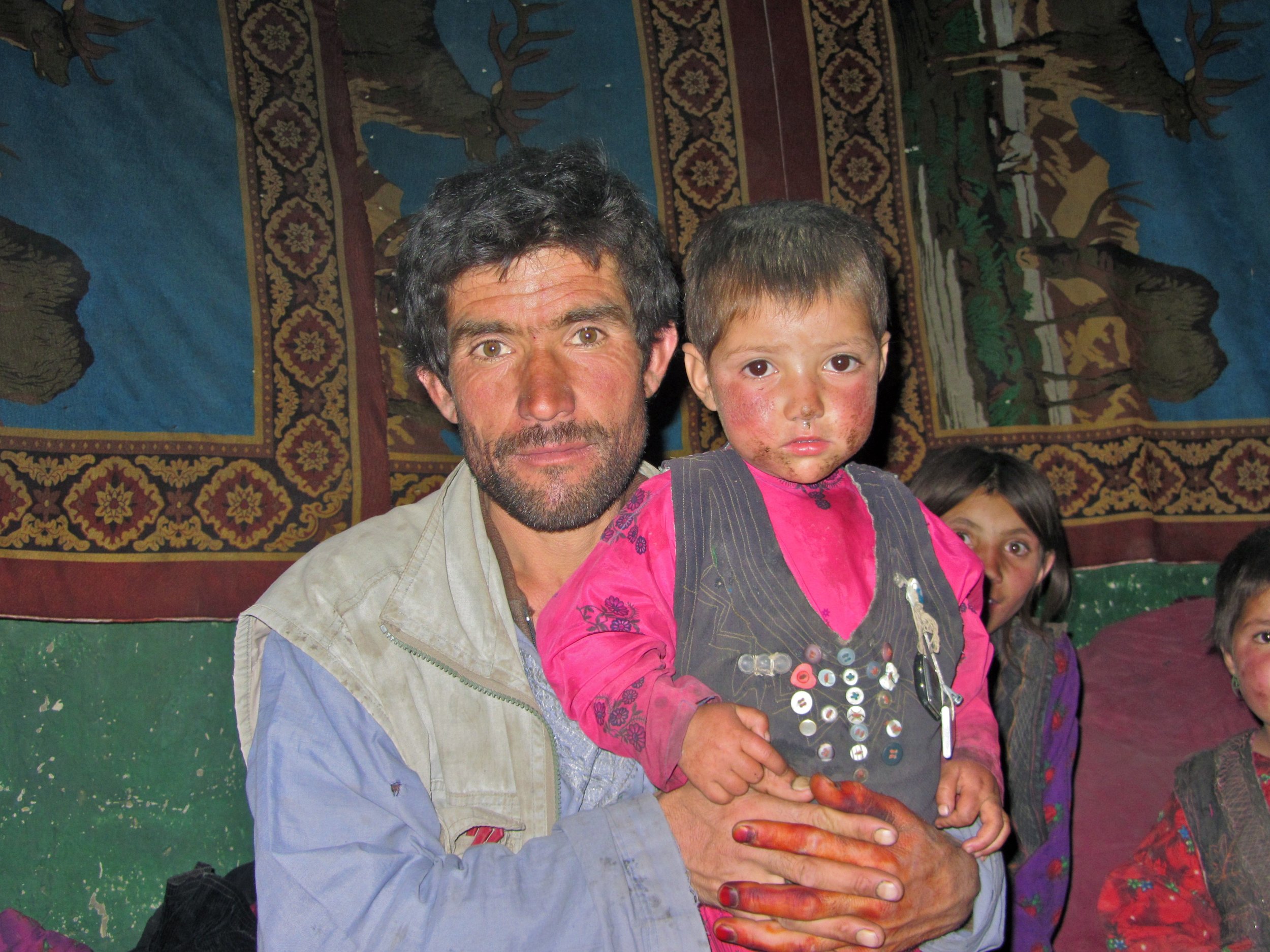Humans of the Himalayas : The Wakhis
Living literally on the Roof of the World or the Bam-I-Duniya are the Wakhi people, who predominantly live in the Wakhan Corridor, the narrow strip of Afghan territory that traditionally separated the British Empire from Tsarist Russia in days of the old. Also called the Khik at present they live in the Wakhan of today's Badakhshan region located in northeastern Afghanistan and southeastern Tajikistan.
Traditional Wakhi Women
The Wakhan sits at the junction of three major mountain ranges, the Hindu Kush, the Himalaya/ Karakoram, and the Pamirs – what is called the Pamir Knot. The valley is carved by the Wakhan River, fed by glacial meltwater from the surrounding mountains. From the town of Ishkashim, at 2,700 meters above sea level, the valley climbs steadily eastward, eventually reaching high altitude pasture land, above 4,000 meters, along the border with China. Due to its dramatic isolation the Wakhan corridor has been spared of the war in Afghanistan and has been mostly spared of the depredations of the war. But region still exists in a time warp due to the same isolation.
A Wakhi Family
The Wakhi are a Persian people as such of Tajik ancestry. The Wakhi speak the Wakhi language, which is a Indo-European language of the Iranian branch of the language family, distantly related to Persian Tajiks, and are Ismailis, a progressive branch of Shia Islam that eschews many conventional Muslim practices. They do not fast during Ramadan, for example, which is uncommon elsewhere in Afghanistan. The Wakhi practice combined mountain agriculture, growing wheat, barley, potatoes, beans, and peas in the valley, and herding their yak, sheep, and goat to high-altitude pastures above 4,000 meters during the summer. Their homes are made of stone and mud-plastered walls that are scattered around the valley floor around irrigated mountain oases. Those Wakhi that bring their animals to the high pastures live in nomadic yak-fur tents during the summer.
A Wakhi Chief
The Wakhi language belongs to the southern group of the Pamir languages, in the Iranian group of the Indo-European family of languages, where the different Ishkashmi and Wakhi languages are included. The Wakhi language, rich in archaisms, differs considerably from the Pamir languages, and generally from the southeastern group of Iranian languages, having certain common characteristics with the Indian languages. Although divided by borders, the Wakhi language is still very much the same, and dialectal differences are not great.
A Wakhi Father and son
The language of mutual communication, and the written language, for the Ismaelites of the small nations of Pamir has been the Tajik language. The Wakhi oral tradition is also bilingual (Wakhi and Tajik). On the Upper Wakhandarya, there are noticeable Turkic influences in place-names. Wakhi-Kirgiz contacts are maintained even today. Many Wakhs also speak the Shugni language. The Wakhi folksong bul’bulik is principally a women’s song, it is sung on the summer pastures. Before the establishment of the Soviet regime, the Wakhs were almost totally illiterate. Nowadays, schooling is obligatory for everyone. The language for schooling is, without exception, Tadzhik, which places Wakhi in a passive role and accelerates the disintegration of the language. In domestic situation, however, Wakhi is still preferred, whatever the subject, although most Wakhs speak Tadzhik quite fluently.
A Group of Wakhi Men
Besides the Wakhan Corridor there are smaller pockets of Wakhis who inhabit the higher reaches of the Hunza Valley in Gilgit Baltistan, Chiral in Khyber Pakhtunkhwa, in Tajikistan across the Pamirs, southern Xinijiang in China, some in Russia and even a few odd Wakhi villages in Turkey. As per the present estimate the total number of Wakhi people would be around 70,000 to 100,000.
In China along with the Sarikoli people the Wakhi are termed as the “Tajik” minority. In Afghanistan, they are officially called "Pamiris". In Tajikistan, the Wakhi are recognized by the state as "Tajiks", but they still self-identify as "Pamiris". In Pakistan, they refer to themselves as "Pamiris" or "Gujali".
Wakhi Old Women
When the Persians and Tartars subjugated the areas north of the Hindukush in the 12th century the southern valleys of the Hindukush gained a distinct identity under different names as Bolor, Dardistan, Tibet Gujal, Kashkar etc who were divided by the chains of mountains however the Ghalcha and Dard people living on the northern and southern side of the Hindukush have been close to each other despite the natural hurdle of the mountain chains.
Trade caravans and pilgrims from eastern Turkistan used to cross over the Kurambar Boroghil and Darwaza passes into Chitral and this caravan route served as a permanent link between these regions. Many people from Chitral crossed into Wakhan for permanent settlement. The Wakhi herdsmen usually came with their flocks to the Boroghil for summer camps. Wakhi horsemen used to visit for Polo and Buzkashi as far south as Razdan field in Torikho valley.The Wakhi art, craft and architecture occupy a distinct place in the neighboring area. There are certain festivities which mark particular occasions and vary from valley to valley. The Wakhi are fond of music Daf open drum and flute and Rabab are popularly played. Male members are responsible for farming, weaving woolen clothes. While women look after the house and cattle.
A Map of Wakhan and Pamir country
Compiled from various sources on the Net
All pics from the Net for educational purposes. In case you own the copyright for any of these and you want it removed please message me and i will remove it immediately.
Prior permission has been taken from the Admins (Other) for this series. If you think that you have a story that needs multiple pics and people pics please get in touch with the Admins.








